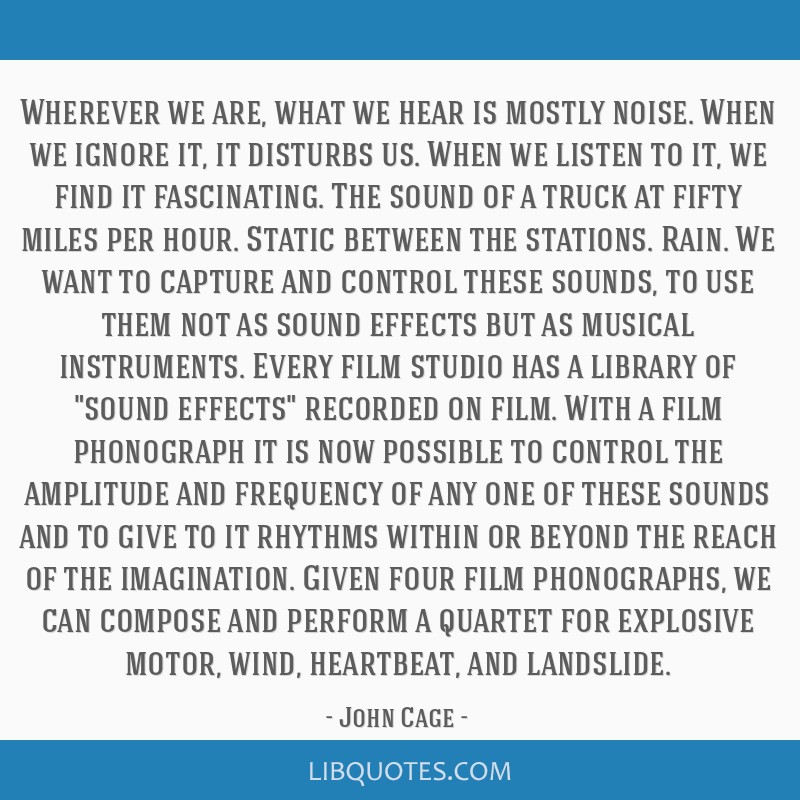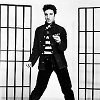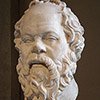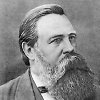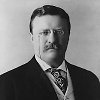Wherever we are, what we hear is mostly noise. When we ignore it, it disturbs us. When we listen to it, we find it fascinating. The sound of a truck at fifty miles per hour. Static between the stations. Rain. We want to capture and control these sounds, to use them not as sound effects but as musical instruments. Every film studio has a library of "sound effects" recorded on film. With a film phonograph it is now possible to control the amplitude and frequency of any one of these sounds and to give to it rhythms within or beyond the reach of the imagination. Given four film phonographs, we can compose and perform a quartet for explosive motor, wind, heartbeat, and landslide.
In: 'The Future of Music: Credo' (1937); in: 'Silence: lectures and writings by Cage, John', Publisher Middletown, Conn. Wesleyan University Press, June 1961, V.


